12 Life Twists That Feel Like a Rollercoaster With No Seatbelt


Whoosh! Dust storms on Mars can really go crazy! They hurtle through the Red Planet’s Southern Hemisphere, especially during the summer. These storms can grow and encompass large areas of the planet, as happened in January 2022.
Then, a dust storm covered almost twice the area of the United States. Could it be something like this that caused one of the robots we sent to Mars to go missing?
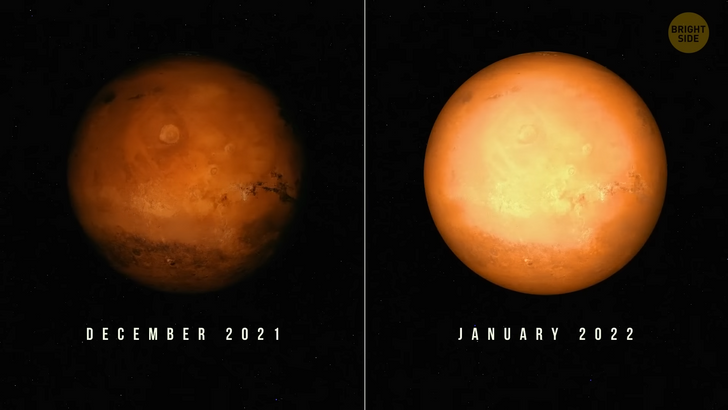
The atmosphere and climate are harsh on Mars. It’s mostly a desert with strong winds and average temperatures of −81˚F. It drops down to −220˚F at the poles during the winter.
A lander needs to be specifically equipped and very sturdy to withstand such conditions. But researchers thought they could handle the difficult trip to the Red Planet.
June 2nd, 2003. A team of researchers got one of their pioneering robots they were about to send to space ready. It was a small and compact lander called the Beagle 2. Its mission was to touch down on Mars and search for what the world had been actively looking for for decades now — life on the Red Planet.
The touchdown was due on December 25th, but... The signal never came! The team tried to contact the spaceship. But at one point, they had to accept they wouldn’t be able to reach it.
Some thought the landing was too difficult and complex after all, so the lander crashed. But they couldn’t find any technical errors. Others had a theory that the lander may have become entangled in its own parachute and fell down to the surface of Mars.
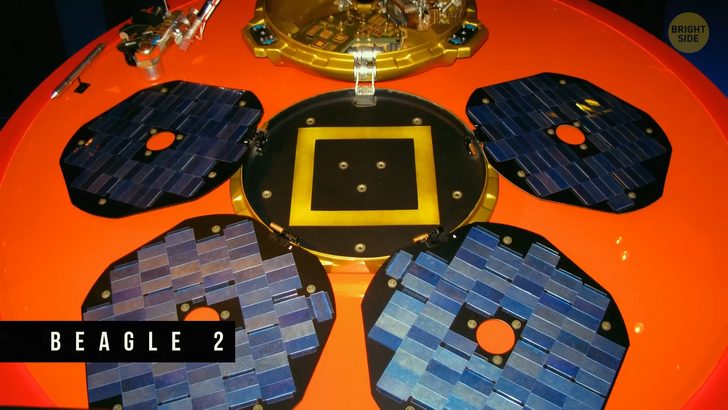
Either way, the Beagle 2 was considered missing — until 2015, when NASA took pictures of what could be the remains of the lost lander! They weren’t just smashed debris — the components actually looked to be intact.
The lander’s remains were lying with its solar panels partially deployed around 3 miles away from the site where it was supposed to land. Apparently, the Beagle 2 managed to land successfully, but its radio antenna got blocked.
That’s why researchers couldn’t control it from Earth or communicate with it. But no one knows exactly why it happened.
Have you heard of a face on Mars? In the 1970s, one of NASA’s spaceships took the iconic images of the Martian surface that showed a face-like formation — as you can see in the upper part of the picture.
If you have a rich imagination, you can easily see a nose, two eyes, a mouth, and an unusual hairdo. Some even thought it was a monument built on the Red Planet by another civilization.
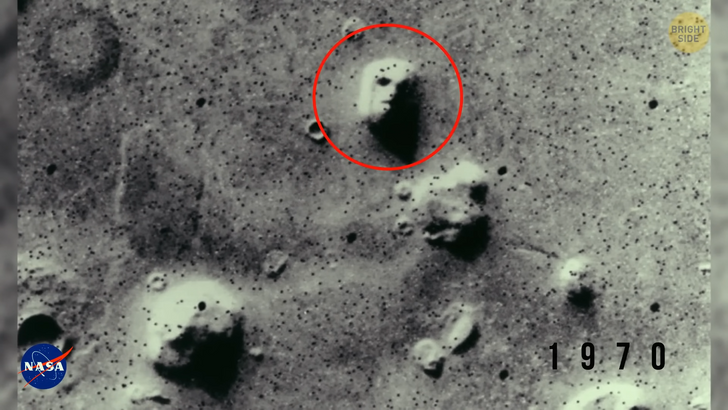
How about some other unusual things people have found on Mars? Like Happy Face Crater — you can easily see why it has this nickname. Or rocks in different shapes — a pancake, brachiosaurus, or fish.
Mars also has a waffle-shaped island on its surface. It’s a 1.2-mile-wide feature you can see in the area of lava flows. It might be the result of lava pushing this formation from below.
It seems astronomers have also got some images of blue dunes. It’s a sea of stunning dark dunes that strong winds sculpted into long lines. They surround the planet’s northern polar cap and cover a region as large as Texas.
Yee-haw! The Red Planet is usually known for its brown sandy dunes, so these ones certainly came as a surprise.
In reality, though, they’re not really blue. If you could visit Mars right now just to take a look, you’d see that these dunes appear brown and orange like the rest.
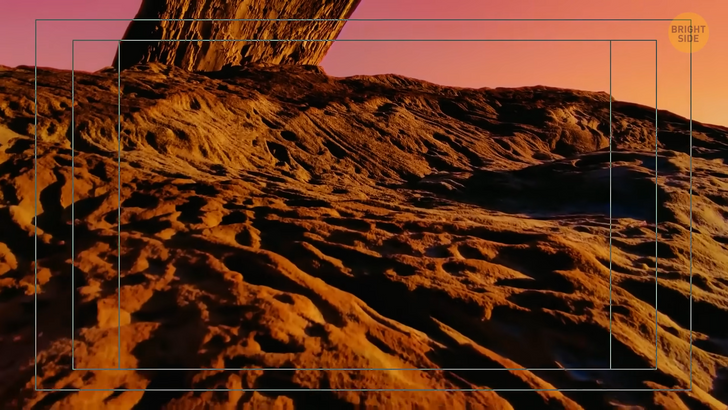
And the picture is a ’false-color image.’ Scientists often use false colors to highlight differences in something — for example, here, it’s the difference in depth.
Also, the biggest valley on Mars is so large it could eat our Grand Canyon for breakfast. It’s a fascinating system of canyons 2,500 miles long called Valles Marineris. And it’s over 10 times as long as the Grand Canyon.
If you could stretch this Martian canyon, it would go from coast to coast of the whole United States! Since Mars doesn’t have active plate tectonics, no one knows for sure how this canyon formed.
One theory says a chain of volcanoes [Tharsis Ridge] located on the other side of Mars — the one that includes Olympus Mons — bent the crust from the opposite side of the planet. This powerful force caused cracks in the Martian crust as well as activated enormous amounts of water lying under the surface.
This water then emerged and carved the rock away. The force activated glaciers too. And they possibly created new pathways in this gigantic canyon system.
Volcanoes on the Martian surface could have erupted about 50,000 years ago, although the most powerful eruptions happened 3 to 4 billion years ago. But the planet doesn’t have active volcanoes today.
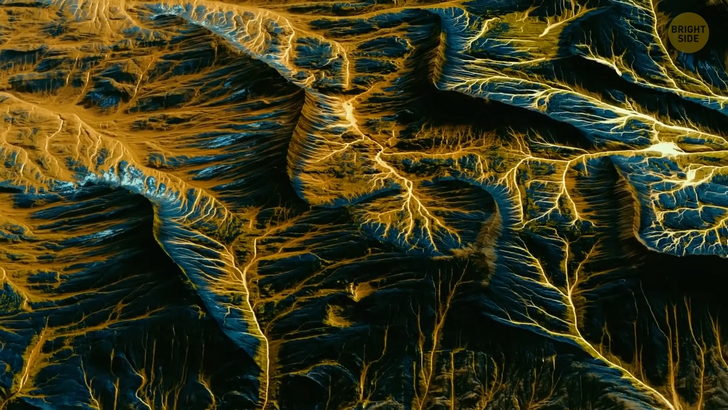
Most of the heat stored in its interior during the planet’s formation has been lost. So now, Mars’s outer crust is way too thick for the molten rock to reach the surface.
But a long time ago, eruptions formed giant volcanoes. And these volcanoes most likely had an important role in melting ice deposits, which released floods of water onto the Martian surface.
Mars has a thin atmosphere with a volume of gas — mostly carbon dioxide — less than 1% of Earth’s. But 4 billion years ago, it was way warmer and wetter than now. Its atmosphere must have been thicker back then, too. That’s why it could create a powerful greenhouse effect and trap sunlight.
Mars also had a powerful magnetic field. Similar to Earth’s, it formed because of the currents of molten metals in the planet’s core.
But unlike our home planet, Mars lost its magnetic field after its core had cooled down. And without it, the planet didn’t have any protection from the solar wind, which is a stream of charged particles flowing from the Sun.
The solar wind pulled away most of Mars’s atmosphere in just a couple of hundred million years. Giver or take. This is what makes those powerful Martian dust storms even more intense.
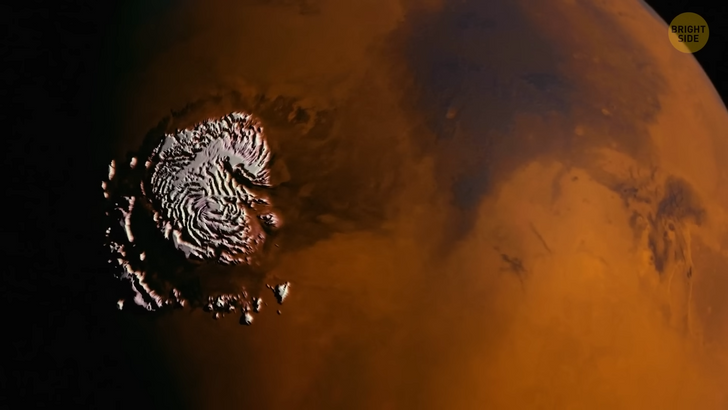
Mars has a fascinating history. Judging by the planet’s glaciers, Mars has probably gone through multiple ice ages, just like Earth. A team of researchers got images of about 60,000 Martian rocks.
Rocks were different in size and distributed randomly — which means they probably formed during different ice ages. Glaciers hide their own stories, too — who knows what kind of gases, rocks, or even microbes could be trapped inside?
If you could get into a time machine and stop it 4 billion years ago — on Mars, of course — the chances are you’d see spectacular scenes of flooding. Maybe there would even be some form of life on the planet’s surface?
A strong meteorite impact that formed the Red Planet’s Gale Crater could be something that triggered that megaflood. After that collision, the temperatures on the planet got insanely hot. This caused the melting of all that ice that was stored on the Martian surface at that time.
The flooding was so massive it changed the geological structure of the planet’s surface. It carved out big ripples as well as waves in the sedimentary rock.
Speaking of water, vapor has been noticed escaping the atmosphere of Mars. Also, researchers have found some evidence of water flowing on the planet’s surface. There are dark streaks in the soil. They seem to get bigger in the summer and shrink over the winter.
There are numerous dried-out valleys and river channels on the planet. It’s possible that liquid water once flowed there. Now, most of it could be locked up in ice caps or even hidden under the surface. More and more things hint that Mars used to be habitable...
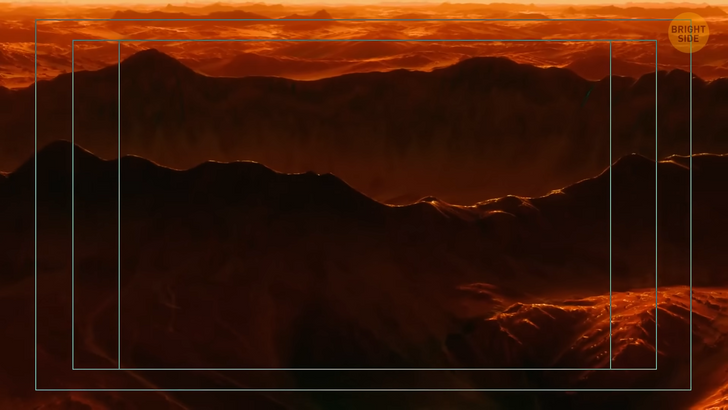
Mars is the only planet we know about where only robots live! Five rovers make up the Martian population. Those are Perseverance, Opportunity, Spirit, Sojourner, and Curiosity.
These robots are there to take pictures and samples of soil and air and maybe even find life on the Red Planet! And someday, we may reunite with them on Mars, who knows?
Oh, and by the way, if you really could get into a time machine and stop it 4 billion years ago — on Mars, Then I’d like to buy you lunch and talk about it. My treat.











